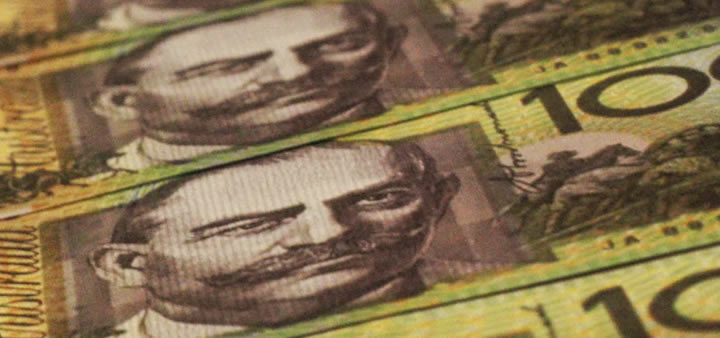The Australian dollar (AUD) is the official currency of Australia as well as several other countries and territories, including Christmas Island, Cocos Islands, Norfolk Island, Nauru, Tuvalu, and Kiribati.
It is traded on foreign exchange markets globally and was the first currency to be used in all of these locations.
Australia, a nation located in the Oceania region, inspired the naming of the Australian Dollar (AUD) as it was initially used in this country, therefore where it acquired its name.

The symbol for the Australian dollar is the dollar sign ($), however, the symbols A$ and AU$ can also be used to represent other currencies whose units of value are measured in dollars.
The dollar sign ($) is used to show the worth of the Australian dollar. The symbol for the United States dollar, which is denoted by the dollar sign ($), is the dollar. The Australian dollar now holds the fifth greatest trading volume of all currencies in the world.
As Australia’s central bank, the Reserve Bank of Australia (RBA), is in charge of a variety of crucial responsibilities. Developing monetary policy and generating revenue for the nation are two of the most crucial responsibilities.
Five different note denominations are available: $5, $10, $20, $50, and $100. There are six distinct coins, each of a different value, that can be used to purchase one Australian dollar.
There are coins worth five cents, ten cents, twenty cents, fifty cents, one dollar, and two dollars.
A brief history of the Australian dollar
It superseded the Australian pound in 1966, and the exchange rate remained constant at two Australian pounds for one Australian dollar throughout its existence.
When coins were first produced, each one had a value of one penny, two cents, five cents, ten cents, twenty cents, and fifty cents. Today, coins have values ranging from one cent to fifty cents. These numbers have been ordered from the lowest to the highest value.
Following Australia’s departure from the sterling standard in 1967, the value of the Australian dollar was pegged to that of the United States dollar at a rate of 1.12 AUD to 1 USD.
This exchange rate remains in effect today. This rate has been the same since that time. Between the years 1975 and 1977, the Australian dollar replaced the United States dollar as the primary currency in Papua New Guinea and the Solomon Islands.

1983 marked the beginning of the period in which the Australian Dollar was permitted to fluctuate freely on the market.
In 1988, Australia became the first nation in the world to employ polymer notes to prevent people from using their currency to create counterfeit bills. This modification was implemented in the hopes of reducing the prevalence of the use of paper money.
To combat the growing circulation of counterfeit currency, these notes were printed.
In 2006, the one-cent and two-cent coins were removed from circulation and ceased to be recognized as legal tender in all 50 states. Australia has issued limited-edition coins and banknotes to commemorate significant events such as the Commonwealth Games.
The modern Australian economy
The service industry contributes more than 63 percentage points to Australia’s total gross domestic product (GDP). This demonstrates how essential this industry is to the overall economy of Australia (GDP).
By the year 2020, it was anticipated that Australia’s nominal Gross Domestic Product will go very near the $1.4 trillion mark. If this happens, the country’s economy will move up to the thirteenth position on the global scale.
As of the year 2019, it is estimated that the natural resources of Australia have a value of $19.9 quadrillion dollars. This places Australia as the tenth richest country in the world as measured by the value of its natural resources.
These resources include things like metals, coal, diamonds, meat, and wool, to name just a few. When added up, they account for the overwhelming majority of the country’s total exports.
The majority of what the nation exports to other countries comes from these resources.
Because this nation also possesses the world’s largest gold deposits, it is capable of satisfying approximately 14% of the world’s demand for gold and 46% of the world’s need for uranium.
Goods such as computers, machinery, and components for telecommunications equipment are examples of things that Australia imports. Additionally, Australia imports crude oil and products made from petroleum.
Many factors, such as the geology and geography of the country and the economic policies that have been implemented by the government, may contribute to the widespread acceptance of the Australian dollar among entrepreneurs.
One of the currency pairs that is exchanged most frequently around the world is the Australian Dollar and the United States Dollar.

There is a correlation between the value of the Australian dollar and the degree to which China and India are interested in acquiring natural resources that are located in Asia.
As a consequence of this, the Australian dollar is also referred to as commodity money on occasion. The decision to increase the quantity of money in circulation from 83 billion Australian dollars to 94 billion Australian dollars was made by the Reserve Bank of Australia.
According to the total domestic market capitalization of its offerings, the Australian Securities Exchange in Sydney has been ranked as the sixteenth largest stock exchange in the world. This ranking is based on the total market value of the offerings.
This rating is determined by the location of the exchange within Australia.
At this point in the summary, we are now at the modern usage of the AUD.
We hope this overview has helped you understand the history and aspects of the AUD, whether you need the knowledge for study or currency trading, we encourage greater study into learning the interesting history of the Australian Dollar!

